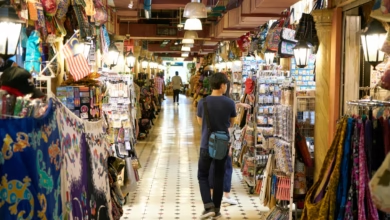Kijang Historic Property in 2015: A Year That Marked Change

The Kijang Historic Property in 2015 stands as a symbol of cultural and architectural heritage, offering visitors a window into a bygone era. Located in [insert specific geographic context if applicable], it has been a significant landmark for locals and tourists alike. While its importance is rooted in its deep historical connections, the year 2015 proved to be particularly pivotal in its timeline.
This blog will explore the significance of the Kijang Historic Property in 2015, highlighting key events, renovations, and their impact on the surrounding community and tourism. We’ll also examine the future of the property and how you can play a role in preserving this iconic site.
A Brief History of the Kijang Historic Property
To understand its significance, we must first look back at the roots of the Kijang Historic Property. Built in [insert approximate year], this property has endured as a testament to [specific cultural or architectural importance, e.g., “early colonial architecture” or “a rich trading legacy”]. It might have served as a [colonial residence, trading hub, cultural center, etc.], reflecting the area’s evolving socioeconomic history.
Over the decades, Kijang has survived natural wear and tear, economic transitions, and modernization efforts that often overlook the importance of preservation. Despite these challenges, it remains one of the most cherished historic landmarks in the region.
Why Was 2015 a Pivotal Year for the Kijang Historic Property?
The year 2015 marked a turning point in the property’s story. At that time, the Kijang Historic Property was at risk of being overshadowed by rapid urbanization and infrastructural development in the area. Concerns about its preservation were growing among local advocates and government bodies.
Recognizing its significance, 2015 became the year of focused renovations and renewed conservation efforts. Not only was the property restored physically, but it also experienced a resurgence of public interest and community involvement. This year highlighted the delicate balance between preserving cultural heritage and adapting to modern needs.
Key Events and Renovations in 2015
The events of 2015 were instrumental in reshaping the Kijang Historic Property. Here are the highlights of that remarkable year:
Structural Restoration Efforts
Years of exposure to [insert potential causes such as “weather erosion,” “neglected maintenance,” etc.] had left the property in need of urgent repair. Key restoration projects in 2015 included intricate roof repairs, wall plastering with historically accurate materials, and restoring windows and door frames to their original design. These efforts ensured that the property could withstand future environmental and structural challenges while staying true to its historic essence.
Focus on Accessibility
One of the defining renovations in 2015 was the implementation of accessibility-friendly infrastructure. Staircases and pathways were re-designed to accommodate visitors of all abilities. This inclusive approach not only aligned with global tourism trends but also encouraged broader engagement from diverse audiences.
Cultural Events and Exhibitions
The property also played host to a number of exhibitions and cultural events throughout 2015. These events celebrated the region’s history and traditions, bringing the property to life through storytelling, art showcases, and traditional performances. Film screenings and guided tours introduced visitors to the stories woven into the walls of the Kijang Historic Property.
Government and Private Collaboration
The restoration efforts in 2015 were supported by both public funding from [mention local government if applicable] and contributions from private donors. This collaboration underscored the property’s importance and showcased how partnerships could lead to impactful outcomes for heritage preservation.
Impact on the Local Community and Tourism
Revitalizing the Kijang Historic Property in 2015 had a profound impact on the local community and tourism:
Increased Tourism Footfall
Thanks to the renovations and well-publicized events, the property drew significant attention from tourists in 2015 and beyond. Tour operators began including the site in their itineraries, and travel bloggers highlighted its beauty, turning it into a must-visit destination for history buffs.
Economic Upliftment
The surge in tourism provided a boost to local businesses, from restaurants and hotels to artisanal shops. Many locals found opportunities in guiding tours or creating small businesses around visitor needs, such as souvenirs and traditional craft demonstrations.
Community Engagement
Perhaps the most meaningful impact was on the local community. The restoration efforts became a source of pride, uniting the community in their shared cultural heritage. School children were introduced to the property’s history through educational programs, ensuring that its legacy is passed to future generations.
Future Plans and Preservation Efforts

While 2015 was a groundbreaking year for the Kijang Historic Property in 2015 the work is far from over. Preservation efforts have continued, focusing on ensuring that the property remains a beacon of culture and history for decades to come.
Some future plans include:
- Advanced Preservation Technology: Utilizing the latest technology to monitor structural integrity and prevent deterioration.
- Expansion of Events: Introducing more interactive and experiential events to attract diverse audiences and keep the property relevant in the modern era.
- Educational Initiatives: Partnering with schools and universities to promote awareness of the property’s significance.
All these efforts align with the broader goal of fostering a sustainable model for heritage preservation.
How You Can Support Kijang Historic Property
The continued success of the Kijang Historic Property depends not only on government and private efforts but on people like you. Here’s how you can contribute to its preservation:
- Visit the Property: Your visits help fund ongoing preservation projects and attract further investment.
- Spread the Word: Share your experiences and encourage others to explore this beautiful historic landmark.
- Contribute: Participate in local events or donate to organizations dedicated to preserving cultural heritage.
Keeping the Kijang Legacy Alive
The Kijang Historic Property in 2015 demonstrated the power of collective action and the importance of preserving our shared histories. Whether through thoughtful renovations or cultural celebrations, the efforts of that year have ensured a bright future for this timeless landmark.
By continuing to support and celebrate such properties, we guarantee that their stories will inspire generations to come. Curious to learn more about visiting or contributing to the Kijang Historic Property? Take the first step today and immerse yourself in the legacy of this incredible heritage site.




